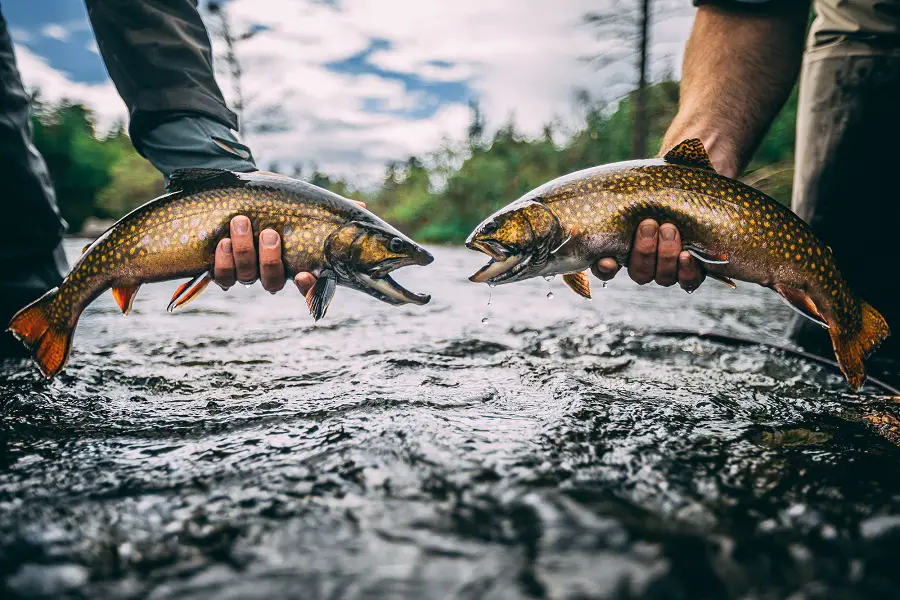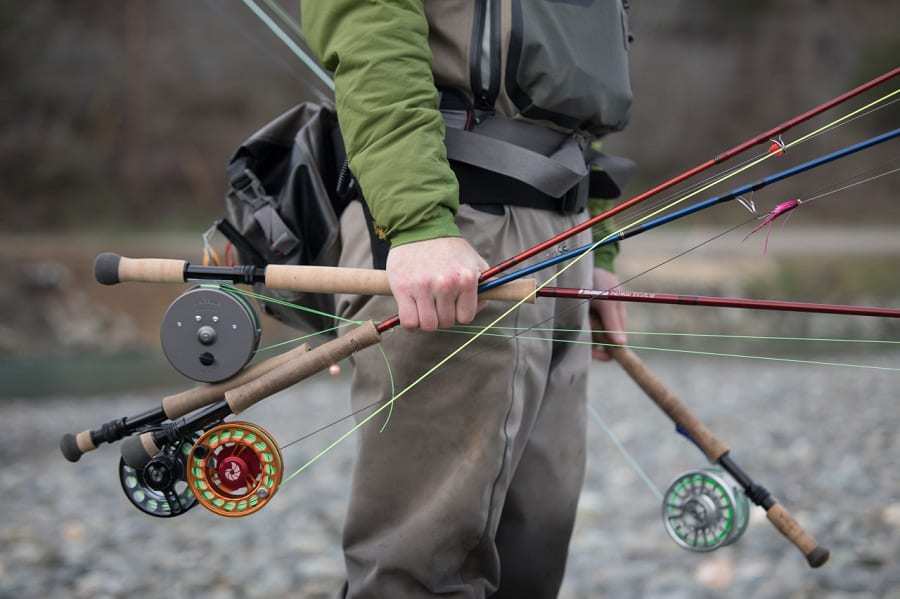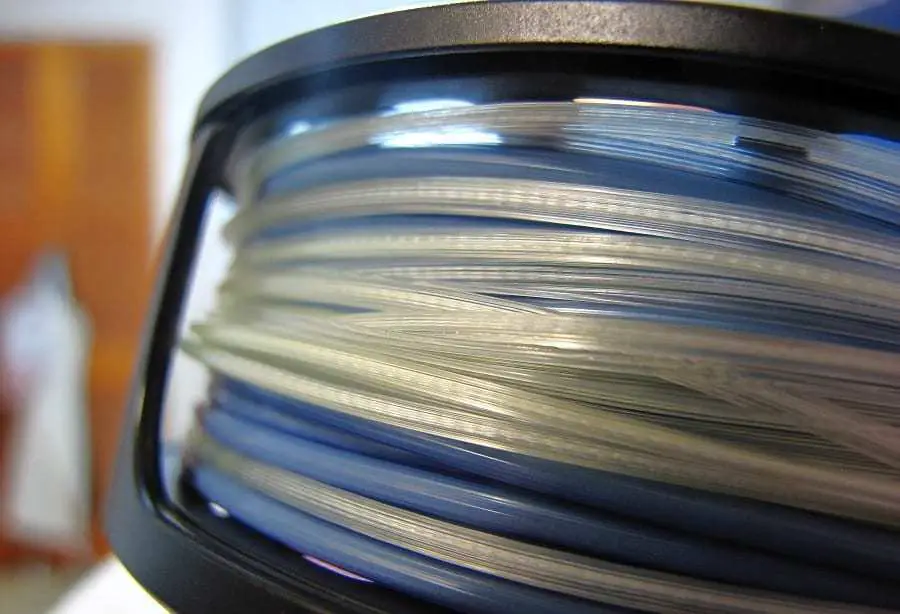Trout is known as one of the more plentiful fish species out there, but that doesn’t mean they’re always easy to catch. If you’re looking to stick your toe in the water and try trout fishing for yourself, planning the expedition and knowing what’s required will lead to a more successful haul.
How do you catch trout?
The easiest way to catch trout is to plan the timing so that the fish are feeding, like at dawn and dusk, so they’re more plentiful and likely to take the bait. Other tactics like using a fly to lure them, keeping the water still, and having a rod that’s the right weight and size to suit the fish you’re after will give you more chances as well.
As one of the most popular fish species that anglers target, having some tips and tricks for yourself that can help you land trout is essential. We’ve rounded up some of the better trout fishing tips you can follow that have been handed down by anglers before you, giving you a better chance for success.
The 9 Top Trout Fishing Tips
Landing a trout is usually on the bucket list of every beginner angler, but it might not be as easy as you think. Follow these tips to set yourself up for success on your next freshwater fishing expedition if catching a trout is your goal.
#1: Timing is Everything
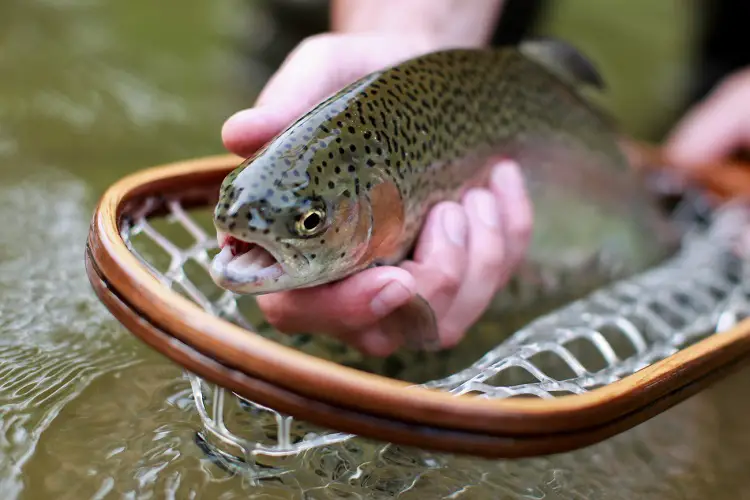
Any good angler knows the importance of timing when you’re trying to land a fish, and when you’re dealing with trout, this timing is even more sensitive. The best time to approach the water is dusk and dawn, as this is when the trout will be out and looking for their daily meals and actively feeding.
Not only do you have to time it right, but find the right location at this time, with experts believing the closest spot to the shore is the best you can do. You’ll catch them at peak feeding times and in their feeding spot, boosting your chances significantly.
#2: Learn the Regulations of trout fishing
Any responsible fisherman takes the time to learn the regulations before diving in and starting to catch fish, and the same goes for when you’re hunting trout. You’ll need to know the laws and rules surrounding fish and whether you need a freshwater license to catch them, so do your research.
A quick search online can also point you in the right direction of where your local area is known for trout. Don’t be afraid to use the learned knowledge of other anglers to increase your chances of success.
#3: Have the Right Bait
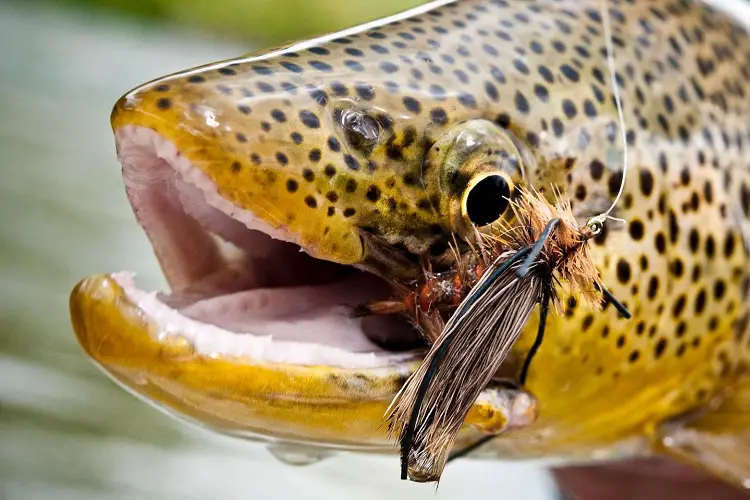
When it comes to landing a trout, you’ll want to cater to their predator nature and know exactly what they want when it comes to bait. These fish aren’t that fussy and they’ll gladly feast on anything that’s around, including small fish, worms, insects, and even mice.
To give you a fighting chance, you need to learn about the trout in your area and what it is they feed on. Their menu might even change during the year depending on what’s plentiful at the time, so you’ll need to be up to date with whatever their food sources are.
#4: Tread Lightly
Compared to other freshwater fish, the trout species is known for being spooked easily, and they usually hang out in shallow water at certain times of the year. This means to land one, you’ll need to be extra careful not to make a lot of motion or noise in the water and to avoid scaring them off.
The best place to fish for a trout is out of the water where possible, but still staying close to the shore. If you do plan on wading in, move as slowly as you can so as not to disturb them, and don’t be surprised if they scurry as soon as you put your toe in.
#5: Keep the Light Away
As tempting as it may be for some anglers, you should never flash a light in the water if you’re trying to catch a trout. As discussed earlier, they’re pretty sensitive, and this includes being spooked by light as well as movement.
The optimal time for fishing for trout is dusk and dawn, which means there’s not that much natural light around. You’ll need to move away from the water and the shore any time you get your flashlight out and start changing flies and retying tippets, but it’s worth the effort to keep them around.
#6: Be Consistent With Flies
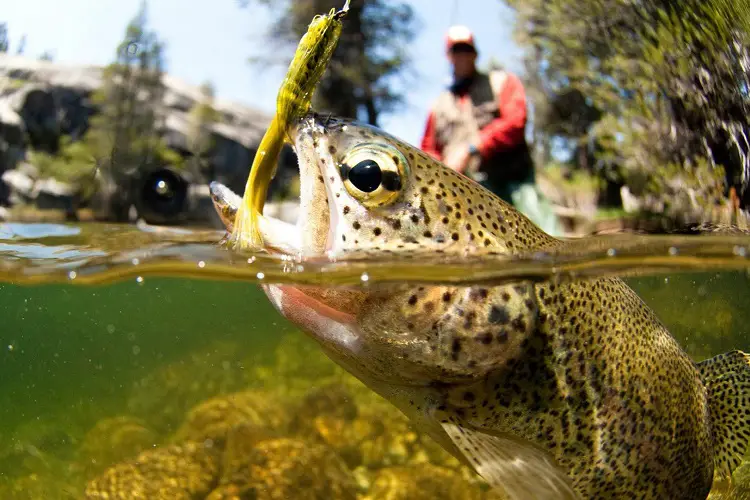
When you’re fishing in the more popular seasons when trout will take just about any bait, it makes your job easier if you only use one type of fly. Once you’re comfortable with a fly pattern and it’s proven effective, there’s no need to mix it up, and doing so could actually cost you some fish.
The reasoning behind this is that trout will prefer to go for just one type of bait when they’re feeling less selective. Keep it simple and consistent, and you’ll likely do better as far as trout are concerned.
#7: Find Their Preference
If you’re unable to figure out what fly exactly landed you that last trout, you may need to dig a little deeper. It’s not uncommon for an angler to do some investigating into the stomach contents of a fish to see, and if means more success in the future, you’ll be happy to do it.
Knowing which types of fly the trout are going for will give you a better idea of the fish in the area, as you likely found the best match for what they’re currently eating. Checking its stomach can show you what fly worked and maybe even what else it’s been feasting on, so it’s a little icky but with good results.
Otherwise, stay consistent with one thing at first so you can see whether it suits their preferences or not.
#8: Don’t Overdo It
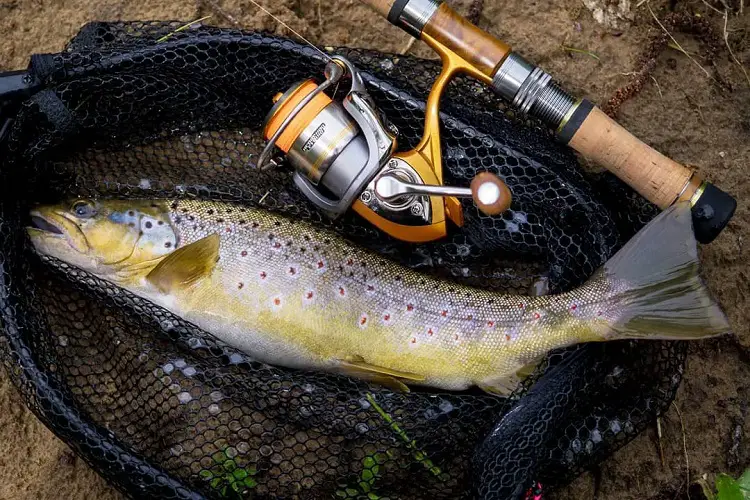
When you’re on a good streak and catching plenty of trout, you can get carried away with your success and perhaps take in more than you should have. However, trout is a fish that tastes better when fresh, so don’t plan on taking any excess home with you otherwise the result won’t be worth it.
If you do overdo it, there’s the potential to spook the fish away from your new favorite spot, and less chance that you’ll be able to come back. Think of the future and take only what you need when going for this famous fish.
#9: Mix Things Up
Trout are pretty savvy and will get tired of going for the same meal all the time during their slower seasons, so you need to be ready to mix up the flies to cater to this. If you know that there are trout in the area but none of them are coming to you while you fly fish, make some changes with the presentation.
Use your wet flies both fast and slow, and even attempt a dead drift if the conditions are right. Sometimes, a little bit of versatility is all it takes to get them interested again, so be prepared to make the effort.
Related Questions
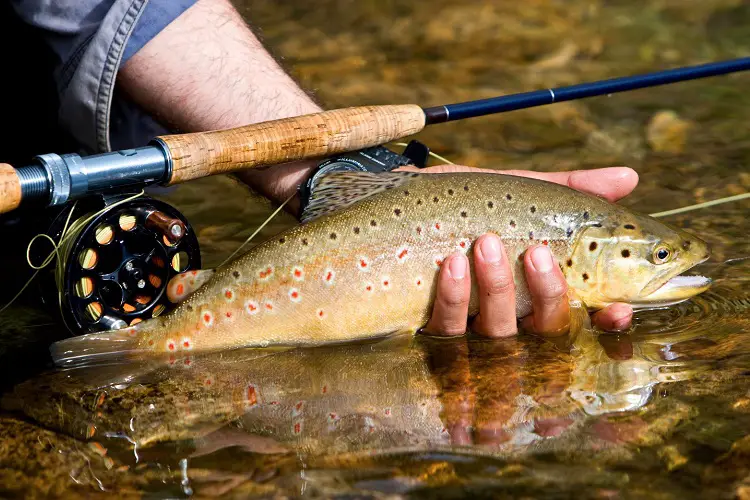
A carefully planned fishing expedition is the best way to land a trout, so make sure you’ve done your research before jumping in. If you want to learn more about these fish and how to catch them with minimal effort, check out some commonly asked questions that other beginner anglers had.
Are Trout Big or Small?
The size of a fully matured adult trout will depend on their habitat, with stream dwellers being the smaller ones, and those living in large rivers and lakes reaching trophy size. Ultimately, though, the size that a trout reaches will depend on the water temperature, depth, and food availability.
Do You Need a Sinker for Trout Fishing?
A sliding sinker can be used in still water when fishing for trout as it still allows the fishing line to move once the bait has been taken, without taking the weight with it. However, if you’re using a fixed weight, you may get better control in a stream, so it depends on where you’re doing your fishing.
How Long Do Trout Live?
The average lifespan of a trout depends on its location and other factors, like the availability of food and whether there’s a high density of other fish in the area. The oldest stream-dwelling trout on record is the California golden trout which is thought to have a lifespan of up to nine years, averaging around seven.
Resources:


